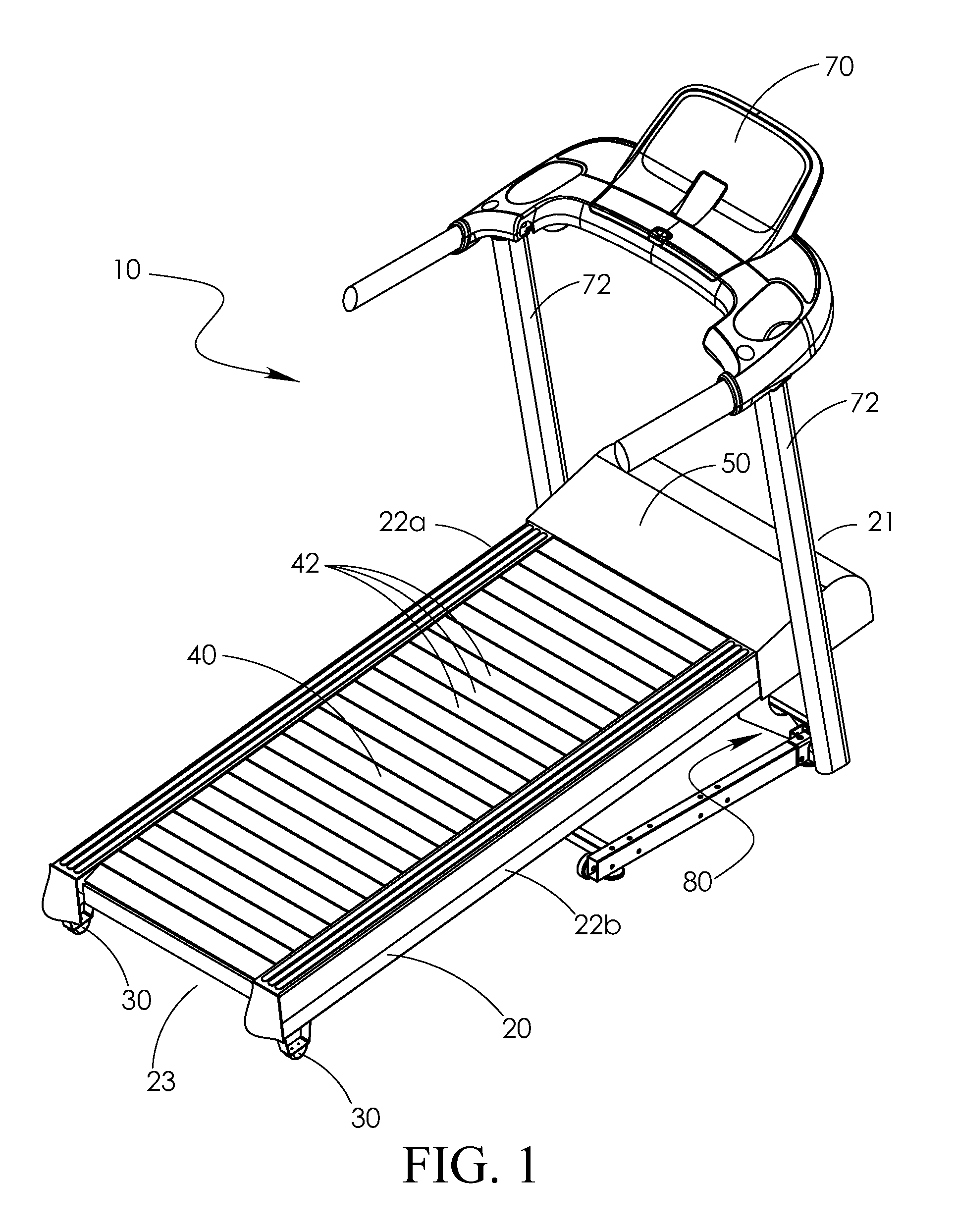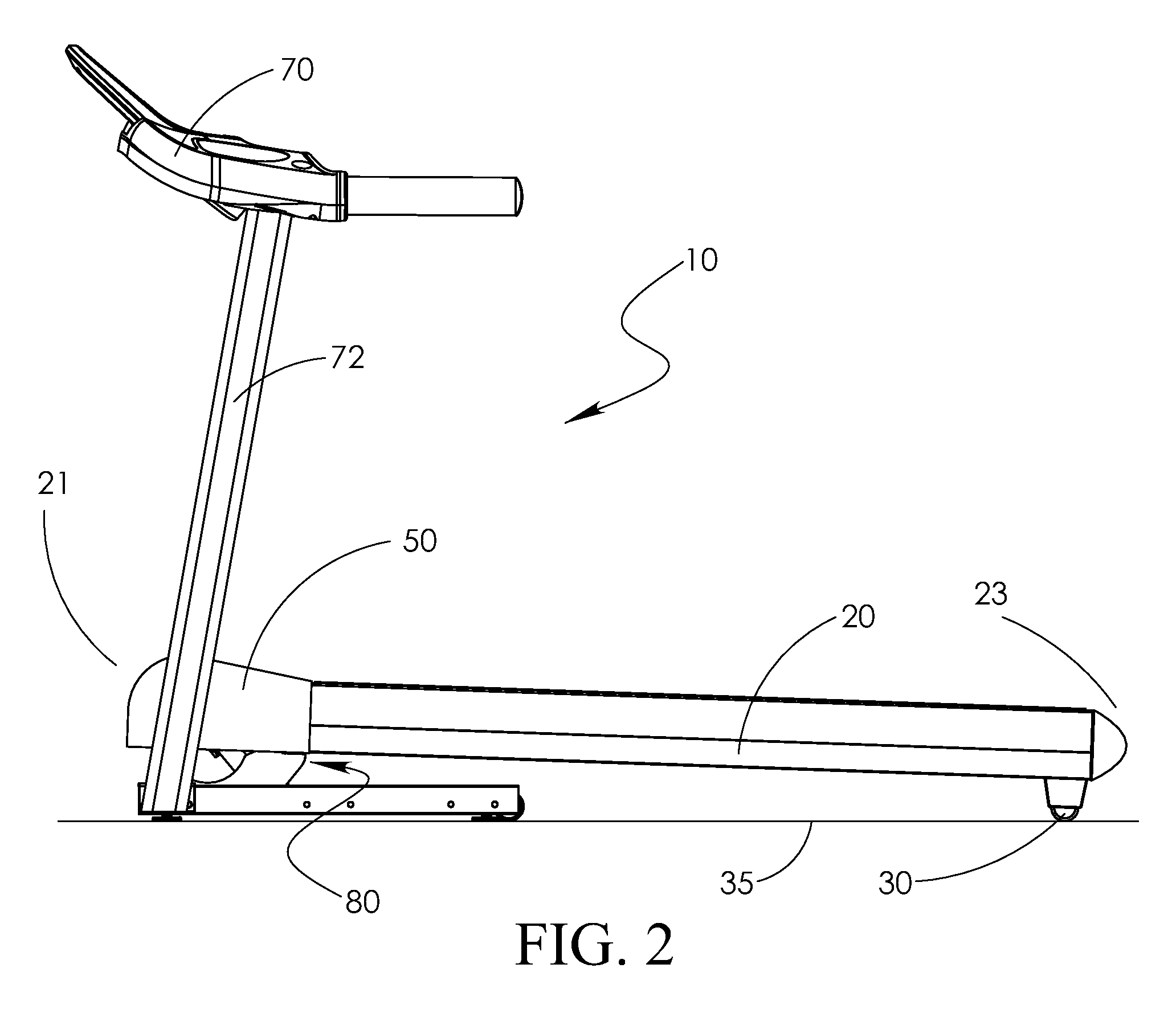Treadmill speed control system
a control system and treadmill technology, applied in the field of treadmills, can solve the problems of difficult control of the speed of the treadmill, difficulty in maintaining a desired speed, and difficulty in operating and controlling the treadmill, and achieve the effect of cost and weight of the drive motor, and cost of operation
- Summary
- Abstract
- Description
- Claims
- Application Information
AI Technical Summary
Benefits of technology
Problems solved by technology
Method used
Image
Examples
Embodiment Construction
FIG. 1 shows a treadmill 10 of the present invention including a frame 20, a tread 40, and an angle adjustment mechanism 80. The frame 20 includes a front end 21, a pair of side frame members 22a, 22b, and a rear end 23. The treadmill 10 also includes a pair of feet 30, a compartment cover 50, a console 70, and a pair of masts 72 for supporting the console 70.
The frame 20 supports the tread, 40, and the two side frame members 22a, 22b are arranged parallel to one another and are joined by at least one cross member (not shown) to maintain the two side frame members 22a, 22b in position with respect to one another. The frame 20 in the illustrated embodiment includes upright masts 72 supporting the console 70, but the masts 72, when used, are not required to be attached to the frame 20. The frame 20 preferably includes the feet 30 for leveling and / or for supporting the treadmill 10 on the ground, floor or other support surface 35.
The tread 40 is operatively mounted on the frame 20 such...
PUM
 Login to View More
Login to View More Abstract
Description
Claims
Application Information
 Login to View More
Login to View More - R&D
- Intellectual Property
- Life Sciences
- Materials
- Tech Scout
- Unparalleled Data Quality
- Higher Quality Content
- 60% Fewer Hallucinations
Browse by: Latest US Patents, China's latest patents, Technical Efficacy Thesaurus, Application Domain, Technology Topic, Popular Technical Reports.
© 2025 PatSnap. All rights reserved.Legal|Privacy policy|Modern Slavery Act Transparency Statement|Sitemap|About US| Contact US: help@patsnap.com



